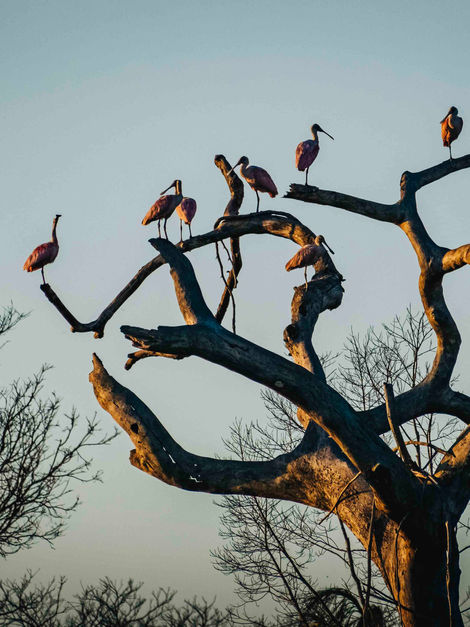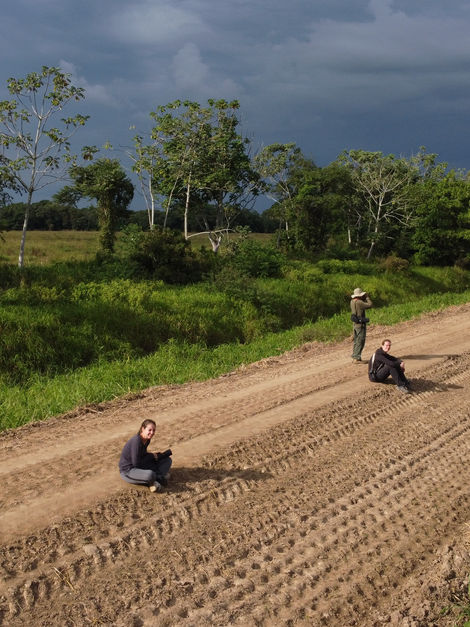Create Your First Project
Start adding your projects to your portfolio. Click on "Manage Projects" to get started
Bolivia's Wildlife (Jaguarland and Madidi National Park)
A big part of Bolivia is its lowland tropical jungle regions, the whole eastern part of the country being part of the greater Amazon area. In turn Bolivia's diversity of animal and plant life is among the greatest in the world. In order to see some of this wildlife and nature, we did two tours in two very different parts of the country.
First, we spent 4 days in Jaguarland, which is located north of Santa Cruz. For this part, we joined up with our friend Rosalie from the Netherlands, who we had met 4 months prior on the ship in Antarctica.
Aptly named for the presence of about 15 Jaguars in the area, this property is actually a big agricultural land, actively being farmed by a Brazilian coorperation. Whilst not being fully wild anymore, the big plantation fields actually provide you with the opportunity to see wildlife more easily than in densly forested areas. Between the fields the farmers leave big strips of forest, serving not only as sanctuaries for the wildlife but also as wind protection for the crops and hunting is strictly prohibited.
We stayed in tents under a primitive shelter. The cook, Natalie, provided us with some of the best homecooked meals we had in a long time, and the days were spent driving around the huge property in a jeep, looking out for animals. We saw a ton of capybaras and caymans, lots of birds, monkeys, turtles. At night we also saw a tapir from up close and one of the most unique sightings was the rainbow boa constrictor, lounging right in the middle of the path. Over the course of 4 days, we had 3 separate jaguar sightings. Unfortunately they were very brief moments of spotting these majestic creatures before they jumped off into the nearest patch of forest, so we did not manage to get a good photograph of one.
Our second destination was an Ecocamp in the middle of the Madidi National Park, northeast of La Paz. In order to reach it, we were being picked up in a small traditional fishing boat in the gateway town of Rurrenabaque. 6 hours of slowly cruising up the river, deeper and deeper into the jungle, we finally arrived at our destination. The Ecocamp consistend of tents set up on wooden platforms, openair showers/toilets and a central eating area protected by a roof but no walls.
Twice a day our knowledgeable guide Pedro would take us on jungle hikes, expertly cutting our way through the thicket with a machete. He showed us which plants were safe to eat, for example the palm nuts, which had a surprisingly good taste of a mixture of mango and avocado. We saw huge spiders, some spider monkeys far up in the tree canopy, another boa constrictor snake and more birds.
One night we hiked to a viewing platform and spent 5h in the complete darkness (from 10pm to 3am), hoping for some tapirs or jaguars to make an appearance. Unfortunately, no such luck. Sitting in the pitch black, feeling the air swush past your face from bats flying past you and hearing the noises of the jungle all around was still a special experience.
We also tried our hand at some traditional line fishing and after a lot of patient sitting and waiting, eventually reeled in one huge catfish, which we ended up having for dinner that night.
Being in the Amazon proved to be a physical challenge with constantly feeling hot, sweaty, grimy and having tons of mosquitos and other creepy crawlies all over you. Towards the end of our stay the weather took a turn for the worse and for the last 2 days it bucketed down without interruption. And, uncharacteristically for this region, it got really cold! All our belongings got completely soaked without any hope of drying out again. Our way back to civilization involved 3h in the pouring rain in the open boat to the nearest (very simple, traditional) village. There, we found ourselves a local guy, willing to drive us back to the city with one of the 4 cars (without a number plate) that belonged to the village. Having to cross several rivers in the process, he had to pop the hood and take out a filter from the car engine in order for it not to get wet as we drove through the water.
After all these adventures, all we wanted was to get back to a warm hotel room and have a hot shower. Unfortunatey, Rurrenabaque is built only for hot weather and the hotel room did in fact not have any glass in the windows, only mosquito nets, so we had to sleep in our thermal underwear and jackets in the freezing cold and I got a bad headcold and a fever. Thankfully the next day, we flew to La Paz, where I could recover in a comfortable Airbnb.







































































































